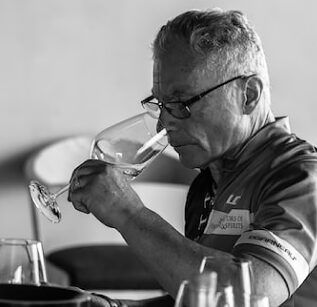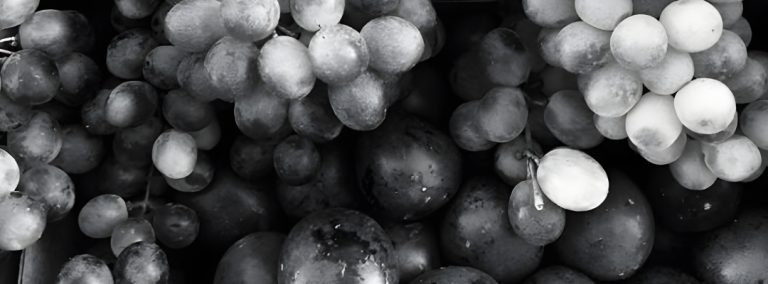From Rioja to Bierzo, Spain makes some of the best value red wines in the world and if you haven’t had a chance to fully explore them, there’s no time like the present. For a great drinking wine that you can open young, try a Crianza from Rioja. If you’re interested in aging wines and want something you can put in your cellar, look for a red wine from the Toro or Priorat regions. A Ribera del Duero is a big, intense red that can have raspberry and blackberry flavors, black pepper, cherry and hints of oak. It makes an excellent wine food pairing for a filet or ribeye steak.
Spanish red wines tend to be medium to full in body with up front fruit flavors, good acidity and hints of spice and oak. Each region produces wine with a unique character influenced by the grapes in the blend, the terroir, and the combination of modern winemaking techniques and a history of wine production that dates back to the Phonecians in 1100 BC.
You’ll find indigenous Spanish grape varietals, including Tempranillo, Garnacha and Monastrell, as well as some non-native grapes that feel right at home in Spain. In Penedès, they make beautiful Cabernet Sauvignon which is usually blended with Tempranillo.
There is no shortage of variety, and one of the best things about Spanish reds is you can rely on them. Wines from Spain are known for their consistent quality at every price range. Expect to pay $15 to $20 for a bottle of mid-range Rioja and up to $40 to $100+ for a Gran Reserva. A wine from Bierzo can cost anywhere from $20 to $30 and a Ribera del Duero will range from $25 to $200+ for older bottles.
These are wines that won’t break your budget and will appeal to most palettes. They’re perfect for bringing to a dinner party or serving if you’re the host as they go with different types of food. And while wines from the different regions have traditionally been harder to find in the US compared to French and Italian selections, this is beginning to change. Most local wine stores will stock a small selection of red wine from Spain and you can find more extensive offerings in urban areas, particularly at better fine wine shops.
History of Spanish wine
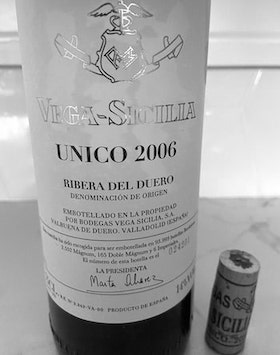
They’ve been making red wine in Spain since before the Romans arrived, but it was only in the late 1800s that modern wine making really took hold. This was thanks in part to two Spanish military officials, Luciano Murrieta and General Baldomero Espartero, who learned about French wine making methods and later introduced these techniques in Logroño, where Espartero owned vineyards. Later on, Don Eloy Lecanda y Chaves took several varietals from France and experimented by blending them with Spanish grapes. His winery, Vega-Sicilia, still makes some of the best red wines in Spain. When phylloxera took over, French winemakers, many from Bordeaux, fled south to where the vines had not been affected. Their influence is still felt in terms of approaches to growing, vinification, and wine aging.
These factors propelled the wine industry forward and despite a slowing down under Franco, in the late 1980s Spain entered the European Union. As formal regulations for wine making were adopted throughout the country, the Spanish wine industry entered a new era and hasn’t looked back since!
3 Red grape varietals
Around 20% of all grapes grown in Spain are Tempranillo and Tempranillo is the main grape in Ribera del Duero and Rioja. Other notable indigenous varieties include Garnacha and Monastrell. Garnacha makes up about 9% of planted grapes, and Monastrell 4%. These are varieties that do well in warmer climates. Note Garnacha is the same grape as Grenache and Monastrell as Mourvèdre, both of which are commonly found in the South of France where summers are quite hot and dry.

Tempranillo
Tempranillo-based wines are associated with red fruit, mainly strawberry and cherry. You can also get leather, earth and spice notes from these grapes. Their name means “early” and the reason they’re called this is they are an early budding and early ripening varietal. Note Tempranillo has also mutated into several slightly different clones as a result of the varying climate conditions across the Iberian Peninsula – more on this further down.
Garnacha
Also known as Garnacha Tinta, Garnacha is both drought and wind tolerant which means it’s well suited to the local climate. It has flavors of red berry with moderate acidity and medium to low tannins.
Monastrell
Monastrell grapes take their name from the Latin word for monastery. It was the monks who first cultivated Monastrell in Valencia, a region on the southeastern coast. Monastrell are dark red in color and can have black fruit, spice and gamey flavors. Monastrell does well in Mediterranean climates and can produce beautiful wines, even in drought conditions.
Other varietals
Mencía is also worth noting. It’s similar to Cabernet Franc, which is the main varietal in the Bordeaux and Loire regions of France. There’s also Bobal, a vigorous and drought resistant dark-skinned grape that can give wine notes of chocolate and dried berries. It’s best planted in drier regions like the coastal areas around Valencia.
Wine Fact: Some of the world’s most celebrated red grape varietals can trace their roots back to Spain. Cabernet Franc is believed to come from the Basque region. Carménère and Carignan, along with Mourvèdre and Grenache, the main grapes in Châteauneuf-du-Pape, all originally came from Spain.
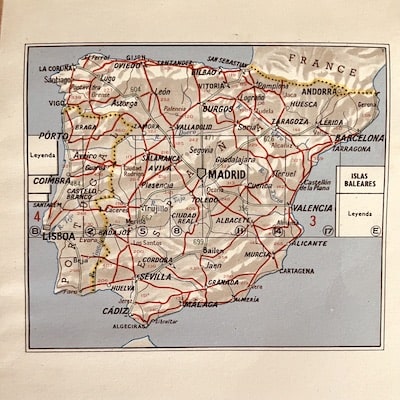
More about Spain
Spain is located in southern Europe on the Iberian Peninsula which juts out into the Atlantic Ocean. It has three major climate zones that influence its different wine growing regions. On its northern coast, Galicia benefits from a cooler and wetter maritime climate that has more consistent seasonal temperatures. On the Mediterranean coast, you’ll find it’s generally warmer and drier with mild winters. Central Spain stands out for its continental climate with hot summers, cold winters and strong winds. Consequently, the main varietals and wines found in each area can be quite different.
Where do they make red wine?
There are close to 19 separate wine growing regions in Spain, but Rioja is by far the most famous and one of the most celebrated for red wine production. It’s located in north-central Spain and is made up of three main growing areas characterized by different soil types.
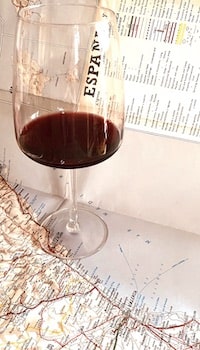
Rioja Alavesa is in the northernmost part, close to the mountains. Rioja Alta is the most historic zone, where the oldest wineries can be found. It’s more central and runs along the Ebro river to its north. Rioja Oriental is the hottest and driest area of the region. Up to 75% of all vines planted in Rioja are Tempranillo, but in Rioja Oriental, Garnacha is the main varietal grown.
Ribera del Duero is located in the Duero River region. The vineyards here grow on high plains where it can be quite dry and hot in the summer. Wines must have a minimum of 75% Tempranillo in the blend, but Tempranillo in this region has mutated. It’s now called Tinto Fino or Tinta del País and has thicker skin and smaller berries. These smaller berries produce wine that is more dense and tends to be fuller-bodied and bigger. Ribera del Duero received its DO designation in 1982.
Spanish Wine Tip: DO stands for Denominación de Origen and is the Spanish equivalent to AOC in France or DOC in Italy. It signifies that the wine meets a certain quality standard in terms of wine production.
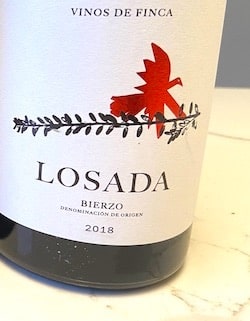
Bierzo is a growing area in the northeastern corner of Castilla y León. Mencía is the main red grape grown here and it shares many characteristics with Cabernet Franc. Wines from Bierzo are medium-bodied and can be a deep purple or violet in color.
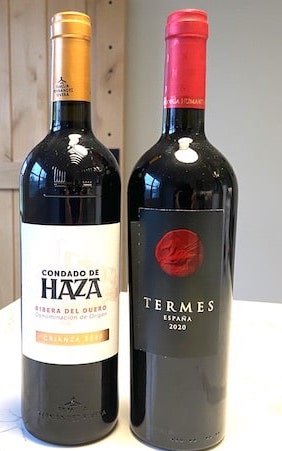
Toro is in the more central region of Castilla y León and received its DO status in 1987. It produces big, tannic and full-bodied reds from another Tempranillo mutation. Tinta de Toro grapes are smaller and have more intensity of flavor with chocolate and spice notes, alongside fruit.
Priorat is an area in Catalonia on the north Mediterranean coast. It’s known for its rugged steep hills and the vineyards planted alongside them. Red wine from Priorat is big, full-bodied and tannic. The major grapes here are Grenache and Carignan but blends can also contain Cabernet Sauvignon, Cabernet Franc, Tempranillo and Syrah. Priorat received its DO in 2009 and is famous for being the first region in Spain to start making single estate wines.
Category levels for Spanish wines
While you might find a slight variation in these rules in different regions, in general, you can use this as a guide:
- Joven. A Joven wine is the youngest red you can buy and will be in the lower price-range. Joven means “young” and indicates the wine didn’t have to spend any time in barrels. A Joven can be released a year after its harvest.
- Crianza. A Crianza is kept for 24 months after harvest and must spend at least 6 months in oak barrels.
- Reserva. A Reserva spends 12 months or more in barrels, and is released three or more years after harvest.
- Gran Reserva. A Gran Reserva is only made in great vintage years and spends a minimum of 18 months in barrels. It can’t be released any sooner than five years after harvest.
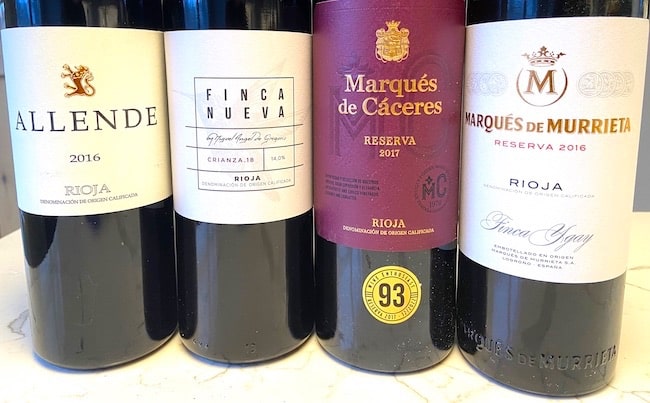
6 Spanish red wines to try
- Rioja. Riojas are some of the most versatile red wines from Spain and also some of the easiest to find. Rioja tends to be medium-bodied and can have a lot of up front fruit flavors, with subtle complexity. It goes well with a wide variety of food, from pizza and red sauces, to steak and lamb. It’s also a nice red to pair with quail, rabbit and game. There are different levels of production based on the intensity of the grapes (which helps determine how long the wine is aged in oak and in the bottle before release). Crianzas are the most accessible. After that, you have Reserva and then Gran Reserva. A Gran Reserva is only made in the best years and is a perfect wine for aging. It can be put in your cellar for up to 15 to 20 years.
- Ribera del Duero. Ribera del Duero wines come from one of the driest and harshest growing areas of the country, which gives them a deep intensity of flavor and great body. Because this is a Tempranillo-based wine, you’ll find it’s deep red in color and has notes of dark fruits, like blackberry, chocolate, and spice. Riberas also tend to be the most oaky wines you’ll get from Spain. These are powerful and tannic reds that you can put in your cellar or serve with a quality cut of red meat. It’s always best to decant Riberas before drinking, to make sure the wine is fully open. They’re at the higher end of the price range.
- Bierzo. You’ll know Beirzo by its deep purple color and forward flavors of cherry and raspberry. It’s a more medium-bodied wine that has good acidity and can have gamey flavors to it. Bierzo goes well with spicy foods, pork sausages and barbecued meats. Bierzos are best for drinking in the first three to five years. You want to be able to experience their freshness and the charm of their fruit flavors.
- Toro. Toro is one of the most intense red wines on this list. Known for its ripe fruit, you can find flavors of plum, blueberry, blackberry and hints of dark chocolate and coffee. Toro is typically made from older vines that can be up to 200 years old and is one of the most expensive Spanish red wines. It’s great for serving with red meat, think steak and prime rib, and you can also put it in your cellar. Keep in mind you don’t want to drink this wine young. We recommend decanting it soon after opening.
- Priorat. Unlike Rioja, Priorat is not known for Tempranillo but rather Grenache and Carignon. Wine from Priorat is complex, with a distinct fruitiness and hints of exotic spices. It’s ruby red in color, medium-bodied and can go well with spicy dishes and braised pork and lamb. These wines would make a great accompaniment to ribs. Compared to other Spanish regions which may use American oak, wines from Priorat are mainly aged in oak from France. They can be a bit harder to find in your local supermarket but a fine wine shop should have a bottle or two. You will sometimes see them on restaurant wine lists as well. Expect to pay a bit more for this red wine, with prices ranging from $25 to $100 for a bottle.
- Valencia Bobal. This is one of the least known Spanish reds but also one of the best value wines. It’s made in the Valencia area and known for its fresh red berry and cherry flavors with hints of herbs. This is a wine you drink young and can pair with grilled meats and vegetables. You may struggle to find it in the US, but if you’re on vacation in Spain, keep an eye out.
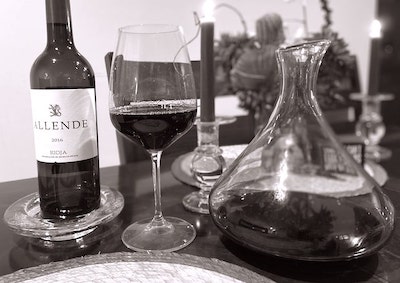
More food pairings for red wine from Spain
You’d be surprised at the versatility of a Spanish red wine. If you’re a fan of Mexican food, try a Crianza from Rioja with your next burrito. You can also pair this red with an oiler fish, like salmon or tuna (a Crianza from Bierzo would work well here too). In general, Tempranillo-based wines are a perfect complement to spicy barbecue food and braised meats. A Priorat is an excellent wine for pairing with roasted chicken or duck and you might try a Toro with a rich slice of chocolate cake!
Where to find Spanish reds
Spanish wines are only just coming into their own in the US (this isn’t the case in England where you can find a wide selection at a great price range). This means you may have to look a bit harder for a cross section of wines from different regions, but it will be worth it. Expect to find mainly Rioja wines in your local supermarket and mostly from larger producers like Marqués de Cáceres. A fine wine store, particularly in big cities, should have a greater selection. If you’re planning on having a red while you’re out for dinner, look for Riberas or Riojas which will be available on most steakhouse wine lists. Tapas restaurants and smaller bistros may also have a selection of Spanish red wines, including by the glass.
What’s Sangria?
Sangria is a common drink in Spain. It’s made by taking a young red wine and adding fruit juices and fresh fruit to it, usually citrus. It’s served in the summer on ice as a refreshing option when temperatures are too high for a regular glass of red. Keep in mind if a red wine is too warm, you may be tasting more of the alcohol than the flavor. Always be sure to serve your red wine at the right temperature.
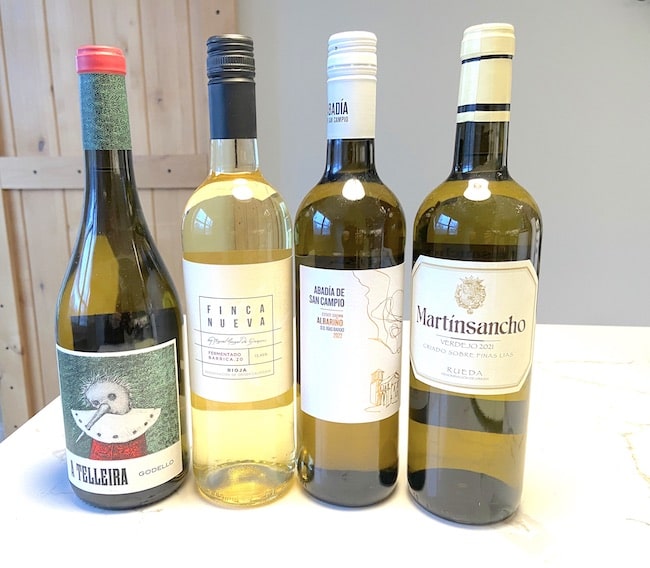
Spanish whites
If you like reds from Spain, you make like some of their whites too. The Rioja region produces some noteworthy white wines. In fact, producers often age wines from Rioja for up to 10 years or more in oak. You can learn more about aging white wines in this article. There’s also Albariño from the Galicia and Rías Baixas region. It’s a light to medium-bodied wine with citrus and stone fruit flavors. From the Rueda area, you might try a Verdejo, which can be similar to a Sauvignon Blanc.

